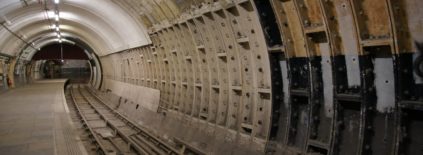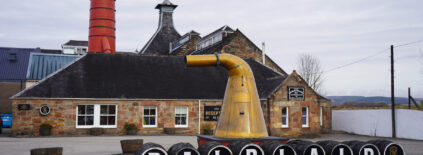
Table of Contents
History & Overview
The London Tube, also known as the London Underground, is the world’s oldest underground railway system, dating back to 1863. It began as a small network of steam-powered trains, running just three miles between Paddington and Farringdon stations. Over the years, it has grown to become one of the most extensive and important public transport systems in the world, covering over 400 kilometers of track and serving over five million passengers every day.
The Tube plays a crucial role in London’s transportation infrastructure, connecting people to all corners of the city quickly and efficiently. It is an integral part of the daily lives of millions of Londoners, as well as a popular mode of transport for tourists and visitors to the city. The Tube is also famous for its iconic design, featuring distinctive roundel signs and tiled stations that have become an emblem of London’s identity.
In addition to the Tube, London’s public transport network includes buses, the Docklands Light Railway (DLR), the Overground, and the Tramlink. Together, these systems provide comprehensive coverage of the city, making it easy for visitors to explore all the different neighborhoods and attractions. With a variety of fare options available, including pay-as-you-go, daily caps, and weekly passes, the network is also very affordable and accessible for all types of travelers.
Logistics of using the London Tube
Payment
 London’s public transport network offers several payment options, including Oyster cards and contactless payment. Oyster cards are plastic smart cards that can be topped up with credit and used to pay for travel on all modes of transport in London, including the Tube, buses, DLR, and Overground. Contactless payment, on the other hand, allows passengers to pay for their journeys using their debit or credit cards, as well as mobile devices such as smartphones or smartwatches.
London’s public transport network offers several payment options, including Oyster cards and contactless payment. Oyster cards are plastic smart cards that can be topped up with credit and used to pay for travel on all modes of transport in London, including the Tube, buses, DLR, and Overground. Contactless payment, on the other hand, allows passengers to pay for their journeys using their debit or credit cards, as well as mobile devices such as smartphones or smartwatches.
Fares on the London transport network are determined by the number of zones a passenger travels through. The network is divided into nine zones, with Zone 1 covering the central part of London and Zones 2-9 radiating outwards. Bus fares are determined by the distance travelled, rather than zones.
Daily caps are in place to ensure that passengers don’t pay more than a certain amount for their journeys each day. These caps are set according to the zones travelled in, with a separate cap for each mode of transport. For example, the daily cap for Zone 1-2 on the Tube is currently £7.40 for Oyster and contactless payments. Once a passenger has reached the cap, any additional journeys they take that day are free.
Weekly and monthly passes are also available for frequent travelers. These passes offer unlimited travel within specified zones and can be purchased using an Oyster card or contactless payment.
Overall, the payment options and fare structures on the London transport network are designed to be easy to use and affordable for passengers, whether they are commuting to work or exploring the city as a tourist.
Navigating the Tube
 Navigating the Tube can seem overwhelming for first-time visitors to London, but with these tips, you’ll be able to confidently make your way through the city’s extensive underground network. Here are some useful bullet points to help you navigate the Tube, including reading the maps, finding the right platform, and transferring between lines and stations.
Navigating the Tube can seem overwhelming for first-time visitors to London, but with these tips, you’ll be able to confidently make your way through the city’s extensive underground network. Here are some useful bullet points to help you navigate the Tube, including reading the maps, finding the right platform, and transferring between lines and stations.
- Download a Tube Map app or pick up a paper map at the station
- Familiarize yourself with the Tube Map and the color-coded lines
- Plan your journey using the TFL Journey Planner website or app
- Check the service updates and disruptions before heading out
- Arrive at the station with enough time to locate the correct platform
- Follow the signs to the correct platform and pay attention to announcements
- Look for the indicators on the platform that show the direction of the train and its final destination
- If transferring between lines, follow the signs and pay attention to the announcements
- Allow for extra time when transferring between lines, especially during peak hours
- Keep your Oyster card or contactless payment ready for scanning at the barriers
- Exit the station using the correct exit, which can be found by following the signs
- If lost or confused, don’t hesitate to ask station staff for assistance
- Avoid traveling during peak hours when possible to avoid crowds and delays
- Consider walking between stations that are close together rather than taking the Tube
- Consider taking the bus or DLR for shorter journeys or to explore other parts of London
Apps & Websites to help with Navigation
There are a number of useful apps and websites available to assist with navigating the London Tube network. Some of the top recommendations include:
- Citymapper: This popular app provides detailed route planning for public transportation systems, including the Tube, buses, and trains. It offers real-time information on arrival times, disruptions, and other updates, as well as step-by-step directions for getting from point A to point B. The app also includes helpful features like estimated travel time, fare information, and the ability to save favorite routes.
- Google Maps: Google Maps is another popular option for navigating the Tube network, as well as other modes of transportation. The app offers real-time information on public transportation schedules and routes, as well as estimated travel times and fare information. It also includes features like offline maps and the ability to save favorite locations.
- TfL Official App: The official app of Transport for London (TfL) provides real-time information on Tube, bus, and train schedules, as well as service updates and alerts. The app also includes a journey planner, fare calculator, and the ability to save favorite locations and routes.
- Tube Map: This free app provides an interactive map of the London Tube network, with information on station locations, routes, and schedules. It also offers real-time information on service disruptions and delays.
- National Rail Enquiries: This app is helpful for those looking to travel outside of London by train, but also provides real-time information on Tube services. The app includes train times and fares, journey planning, and service updates.
Overall, using these apps and websites can make navigating the London Tube network much easier, providing real-time information and helpful features to assist with route planning and getting around the city.
Accessibility on the Tube
The London Tube network provides a range of accessibility options for passengers with disabilities or reduced mobility. These include:
- Wheelchair accessibility: Many Tube stations have step-free access to the platforms, as well as lifts or ramps to help wheelchair users get on and off trains. Stations with step-free access are indicated on the Tube Map with a blue and white wheelchair symbol.
- Audio and visual announcements: All Tube trains have audio and visual announcements that indicate the name of the station and the line’s direction, making it easier for passengers with hearing or visual impairments to navigate the system. The announcements are also helpful for passengers who are unfamiliar with the Tube network.
- Priority seating: Priority seating is available on all Tube trains for passengers with disabilities or reduced mobility, as well as pregnant women and elderly passengers. The priority seats are clearly marked with blue signs and are located near the doors of the train.
- Assistance dogs: Guide dogs and other assistance dogs are allowed on the Tube network, and are not required to wear a muzzle.
- Staff assistance: Station staff are available to assist passengers with disabilities or reduced mobility. They can help with directions, provide wheelchair assistance, and offer other support as needed.
Overall, the London Tube network strives to be accessible to all passengers, and is committed to improving accessibility in the future.
Safety & Security on the Tube
The London Tube is considered a safe mode of transportation in London, and has very low crime rates. However, as with any public transportation system in a major city it is important to take precautions. The Tube does also have security measures in place, including CCTV cameras, station staff and emergency alarms in each carriage.
Here are some tips for staying safe and secure while using the Tube:
- Keep your belongings close: Pickpocketing is a common problem on the Tube, so keep your valuables close to you and be aware of your surroundings. It’s also a good idea to keep your backpack or purse in front of you.
- Be cautious on escalators: Hold onto the handrails when using the escalators, especially if you’re carrying heavy bags or luggage. Be sure to stand to the right if you’re not walking up the escalator, so others can pass on the left.
- Avoid traveling alone late at night: If you’re traveling late at night, it’s a good idea to try to travel with others. If you do need to travel alone, sit in a carriage near the driver or the conductor.
- Familiarize yourself with emergency procedures: Take a moment to look for the emergency alarms in each carriage and know how to use them. Be aware of the nearest exits and emergency exits, and know what to do in case of an emergency.
- Watch your step: Be careful when getting on and off the trains and mind the gap between the platform and the train. Also, be aware of any uneven or slippery surfaces, especially during wet or icy weather.
Remember, the vast majority of journeys on the Tube are safe and incident-free. However, it’s always important to be vigilant and take steps to ensure your own safety and security.
Best time to Travel on the Tube
 The best times to travel on the Tube to avoid rush hour crowds and delays are outside of peak hours. Here are some tips:
The best times to travel on the Tube to avoid rush hour crowds and delays are outside of peak hours. Here are some tips:
- Peak hours are typically from 7:30am-9:30am and 4:30pm-6:30pm, Monday to Friday.
- If possible, avoid traveling during these times, especially on the busiest lines such as the Central and Victoria lines.
- If you must travel during peak hours, try to plan your journey outside of the busiest times, such as traveling before 7:30am or after 9:30am.
- Weekends and bank holidays are generally less busy, so if your schedule allows, try to plan your travel for these times.
- If you are planning on using the Tube during peak hours, consider using alternative routes or modes of transport, such as buses or cycling, to avoid the busiest stations and lines.
When traveling during peak hours be prepared to wait for several trains to pass before you will be able to board. It will be unlikely that you will get a seat during peak hours, and very likely will be in close proximity to strangers on the train, packed into the vestibule area quite tightly.
Etiquette for traveling on the Tube
 Tube Etiquette is taken seriously in London and tourists should have some awareness of the nuances when they are visiting the city and using the Tube.
Tube Etiquette is taken seriously in London and tourists should have some awareness of the nuances when they are visiting the city and using the Tube.
- Stand on the right: When using escalators, stand on the right side so that others can pass on the left.
- Let passengers off before boarding: Wait for passengers to exit the train before boarding, and don’t block the doors.
- Don’t block the doors: Make sure you’re not blocking the doors when you board or exit the train.
- Stand clear of the closing doors: When boarding or exiting the train, make sure you’re clear of the closing doors.
- Offer your seat to those in need: If you see someone who needs a seat, such as an elderly person or a pregnant woman, offer them your seat.
- Move down the carriage: During peak hours, move down the carriage to make space for other passengers.
- Keep your bags close: Keep your bags close to you and out of the way of other passengers.
- Avoid loud conversations: Keep your voice down and avoid loud conversations that can be disruptive to other passengers.
- Don’t eat or drink on the Tube: Eating or drinking on the Tube is generally not allowed, so avoid doing so.
- Mind the gap: Watch your step and be mindful of the gap between the platform and the train.
- Don’t lean on the poles: Avoid leaning on the poles in the carriage, as they are often needed for support by other passengers.
- Keep to the left: When walking through the stations, keep to the left to allow others to pass on the right.
When getting on and off the trains it is important to not crowd the door way or the platform. If you need to regroup and decide where you’re going to next it is important to step aside and allow others to pass on the platform or onto the train.
Tube & Tourism
Tourist Attractions Accessible via the Tube

The extensive network of the Tube has great access to most of the major landmarks in London, and can be used to get from point to point easily.
Navigating London’s Top Attractions with the Tube
- The London Eye
- Buckingham Palace
- The Tower of London
- The British Museum
- Westminster Abbey
- Tate Modern
- The National Gallery
- The Shard
- The Natural History Museum
- St. Paul’s Cathedral
- The Tate Britain
- The Science Museum
- The Victoria and Albert Museum
- The Royal Opera House
- The Globe Theatre
- The National Portrait Gallery
- The Royal Academy of Arts
- The Churchill War Rooms
- The Serpentine Gallery
- The Saatchi Gallery
- The Houses of Parliament
- The Emirates Stadium
- The West End
- The National Theatre
- The Royal Botanic Gardens (Kew Gardens)
Hidden London, Touring CLose Tube Stations
Disused Tube Station Tours by Hidden London
“Hidden London” is a tour series that offers visitors the opportunity to explore some of London’s abandoned or disused Tube stations. Here are some of the closed Tube stations that you can visit with “Hidden London” and what makes them so special:
- Aldwych Station – located in the heart of London’s West End, this station closed in 1994 and is now used as a filming location for movies and TV shows. Visitors can explore the station’s platforms and learn about its history.
- Down Street Station – this station closed in 1932 and was used as a bomb shelter during World War II. Visitors can see the station’s abandoned platforms and learn about its wartime history.
- Brompton Road Station – located near the Victoria and Albert Museum, this station closed in 1934 and is now used as a storage facility for the museum. Visitors can see the station’s abandoned platforms and learn about its history.
- Charing Cross Station – this station was closed in 1999 and is now used as a training facility for Tube drivers. Visitors can see the station’s abandoned platforms and learn about its history.
- Euston Station – this station closed in 1969 and is now used as a training facility for the London Fire Brigade. Visitors can see the station’s abandoned platforms and learn about its history.
Visiting these closed Tube stations is a unique and exciting way to explore London’s rich history and architecture. “Hidden London” offers visitors the opportunity to see parts of the city that are not usually open to the public, and to learn about the fascinating stories behind these abandoned stations. For history and architecture buffs, a visit to one of these closed Tube stations is an unforgettable experience.
Hidden Gems on the Tube Network

There are many hidden gems to discover on the Tube network in London, from quirky cafes to historic landmarks and scenic parks. Here are some lesser-known stops worth exploring:
- Highgate Station – located in the north of London, this stop offers access to Highgate Cemetery, the final resting place of many famous figures including Karl Marx and George Eliot.
- Stepney Green Station – located in East London, this stop offers access to the Stepney City Farm, a small urban farm that offers visitors the chance to see animals and enjoy the outdoors.
- Little Venice – located near Warwick Avenue Station, this picturesque area of London is known for its canals, colorful houseboats, and waterside cafes.
- Brockley Station – located in South London, this stop offers access to Hilly Fields Park, a scenic green space with great views of the city skyline.
- Belsize Park Station – located in North London, this stop offers access to Hampstead Heath, a vast green space with wooded areas, swimming ponds, and stunning views of the city.
- Greenwich Station – located in Southeast London, this stop offers access to the historic Greenwich Market, the Royal Observatory, and the Cutty Sark, a 19th-century sailing ship.
- Chiswick Park Station – located in West London, this stop offers access to Chiswick House and Gardens, a beautiful historic estate with landscaped gardens and classical architecture.
Exploring these lesser-known stops on the Tube network is a great way to see a different side of London and discover some hidden gems. From historic landmarks to scenic parks and quirky cafes, there’s something for everyone to enjoy.










